Regalia for the Order of the Laurel in the SCA Kingdom of Lochac.
Following the success of the Pelican Cloak project, a competition was held in mid 2012 to design the Lochac Laurel Cloak. I won the competition with a design based on the Sternenmantel (Star Mantle) of Heinrich II, the last Saxon king of Germany and Holy Roman Emperor.
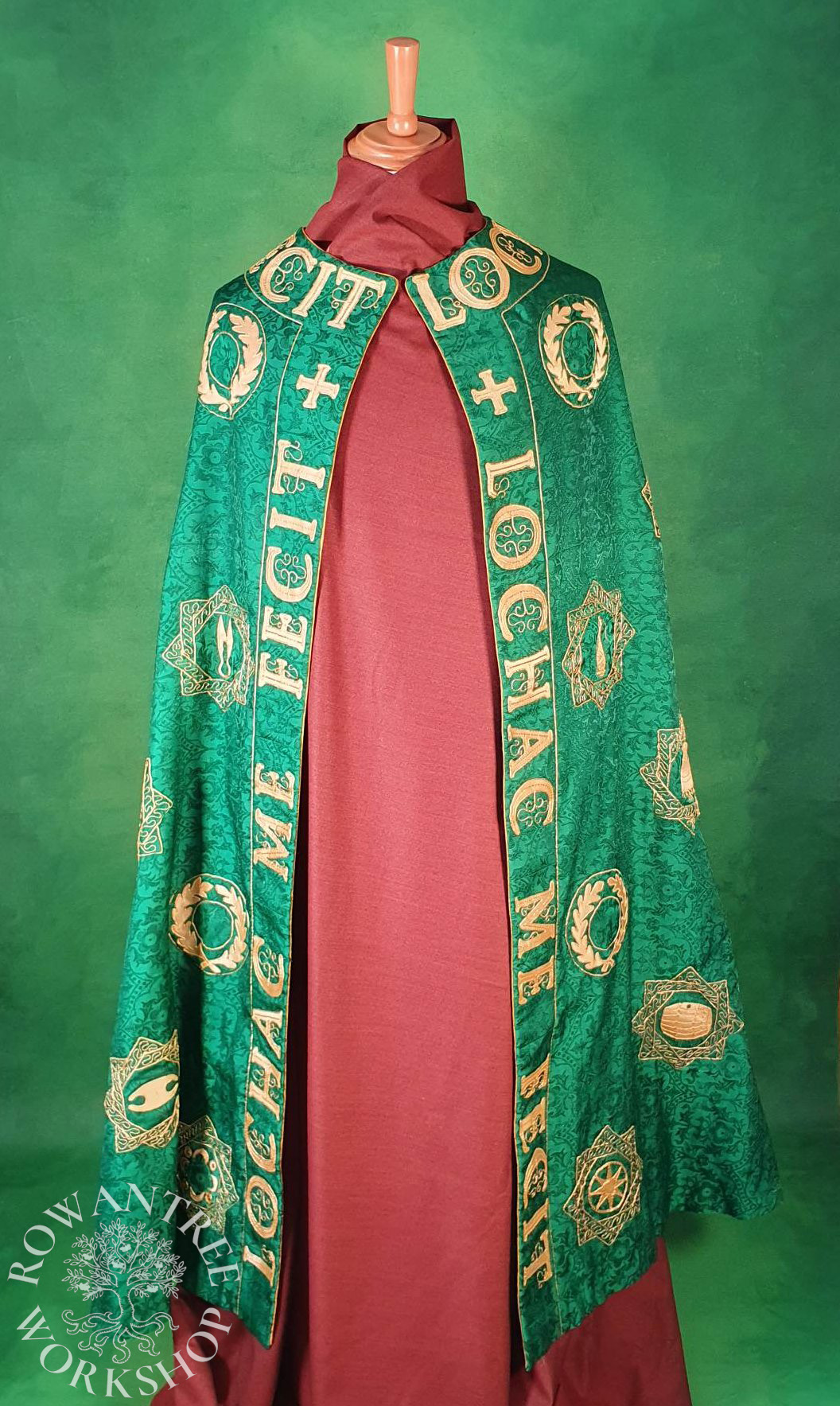
Although I undertook the research, design and construction, the embroidery was a group project, with many contributors!
Research and Design
The Sternenmantel was presented to Henry by Duke Ismahel of Bari in the 11th century. It was donated to Bamberg Cathedral by Henry II or his wife, where it was used as a cope. The mantle is currently housed in the Cathedral Treasury in Bamberg, Germany.

The original 11th century mantle was made of silk twill with medallions of the life of Christ and celestial bodies worked in couched gold thread, with some details in coloured silk in stem stitch. In the 15th century, the embroidered elements were cut away and remounted on the current Italian silk damask, so the original placement of the motifs is not known.
Since the original shape is unknown, I decided to modify the shape of the neck, based on other medieval mantles, such as the Coronation Mantle and the mantle of the Order of the Dragon.
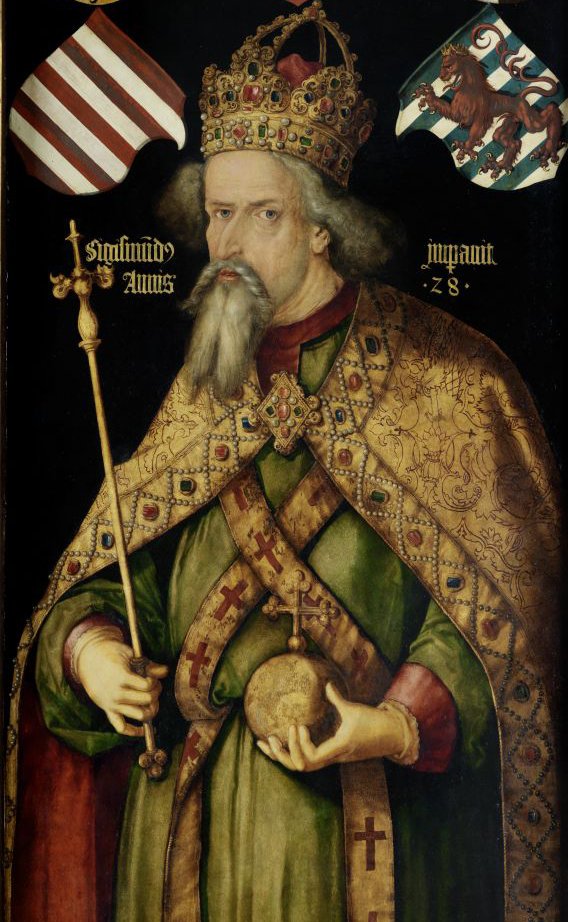
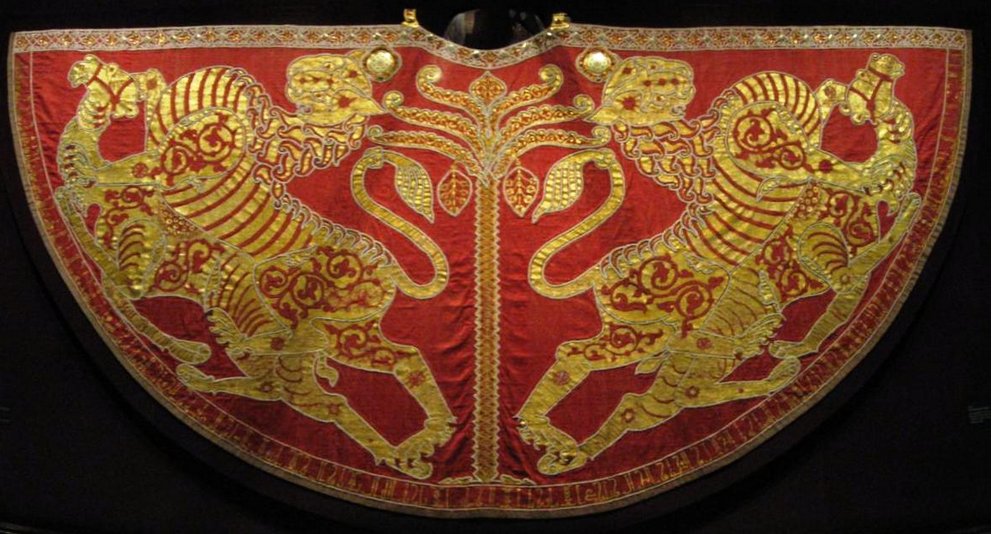
Source: Wikimedia
The elements of the original were easy to adapt to my purpose. The Sternenmantel includes a number of circular emblems, which depict celestial bodies and silhouettes in floriated rings. I adapted these to depict laurel wreaths, the symbol of the Order of the Laurel.


In the original cloak, the stars are created by two interlocking squares, with a vinework border, surrounding images of the life of Christ. I adapted the star medallions to depict images of the arts and crafts for which the members of the Order have been recognised. I simplified the border to make it easier to execute in couching.
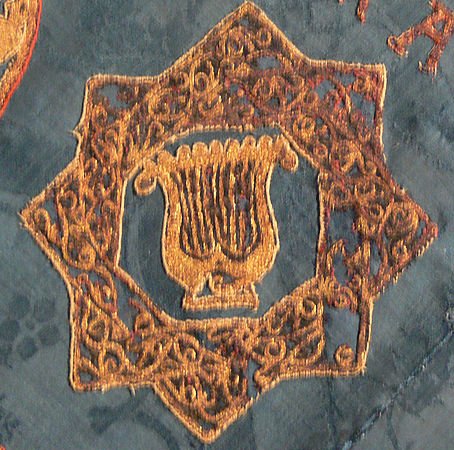

The Sternenmantel has a border of capitals in Carolingian style around the hem and smaller Latin inscriptions near some of the medallion scenes. I opted for a border of decorative text along the leading edge, as seen in many of the mantle designs, rather than along the hem. These border sections also provide reinforcement along the edge most subject to wear.
I also simplified the text, to make it easier for people to sew, while still relating to the original.

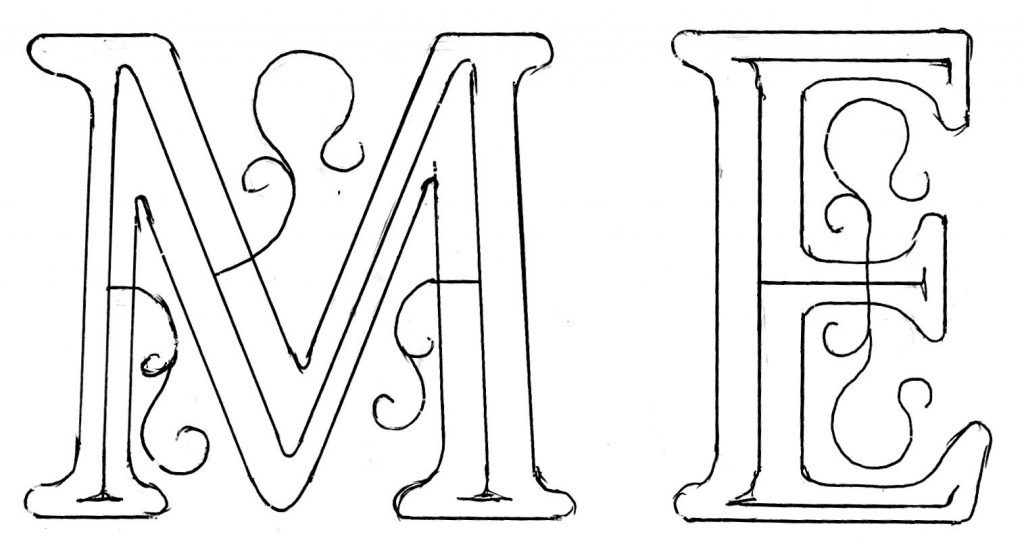
The border text reads ‘LOCHAC ME FECIT’ (Lochac made me) repeated to fill the border. Such inscriptions were often found on medieval craftworks, and it speaks to the purpose of the Order.
Construction
The cloak is made of green silk brocade, interlined with linen and lined with silk. I loved the design of the silk brocade, but the green was too light, so I over-dyed it a richer green using a commercial dye.
The laurel wreaths and elements of the star medallions are highlighted with appliquéd gold silk. The medallions and border motifs are embroidered using gold twist, laid double, couched down with silk.
I worked samples, then prepared 60 kits for the individual motifs, wreaths and edge pieces. Each kit contained a mounted piece of green silk, and cardboard bobbins with gold twist and gold silk thread for couching, and detailed instructions.
I made stencils to draw the outline designs – a fast and accurate way to make so many kits. I attached the gold silk elements with bond-web – not historically accurate, but strong and effective.

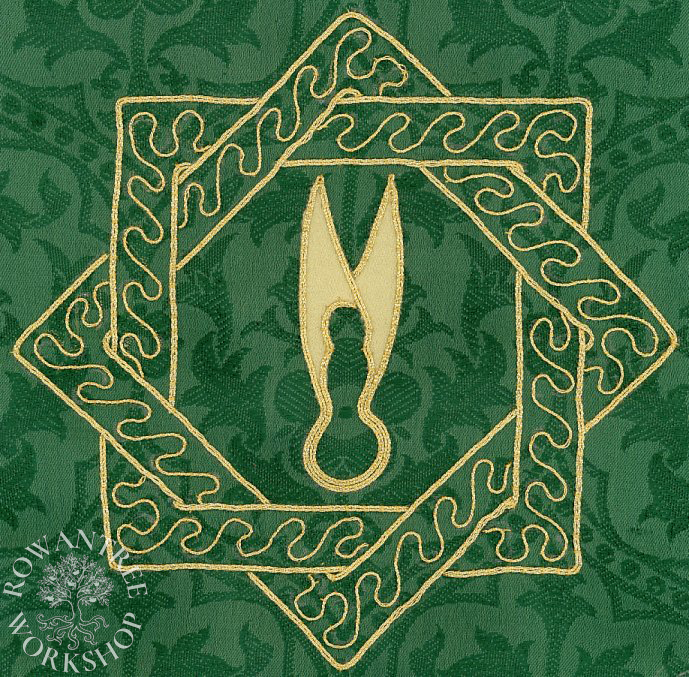
Before sending out the kits, I asked some friends to test the instructions, since these were quite complex. Their feedback ensured the final instructions were as clear as possible.
I sent out kits to those who had offered to work on the project – the Worshipful Company of Broderers and members of the Order of the Laurel. Some people returned their completed sections quickly, while other needed a lot of chasing up.
When I had all the border sections back, I sewed these together then attached this to the cloak, couching cold twist along the seam.
For the individual motifs, I cut each out one out, then folded under the edge and basted the hem. I applied the completed pieces to the cloak in a grid, alternating wreaths and symbols, and changing orientation so they would look correct when the cloak was worn.
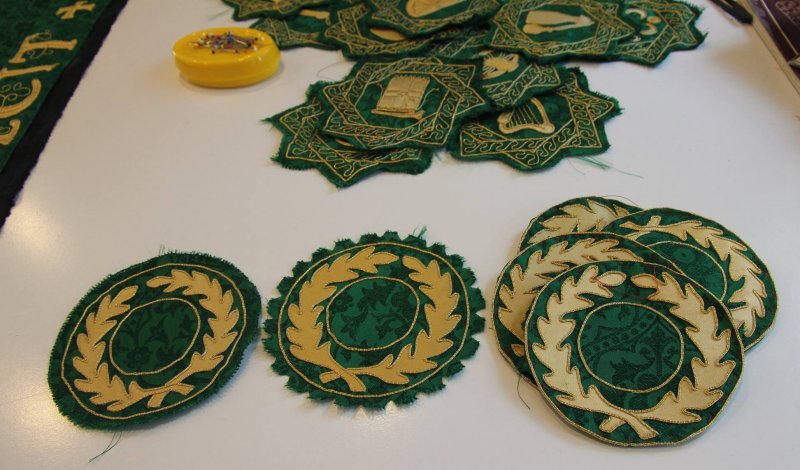

The cloak was finished enough by July 2014 to be used, but additional pieces were added as they were completed.

You can see more details about the project and details of the individual elements on the website of the Worshipful Company of Broderers of Lochac.

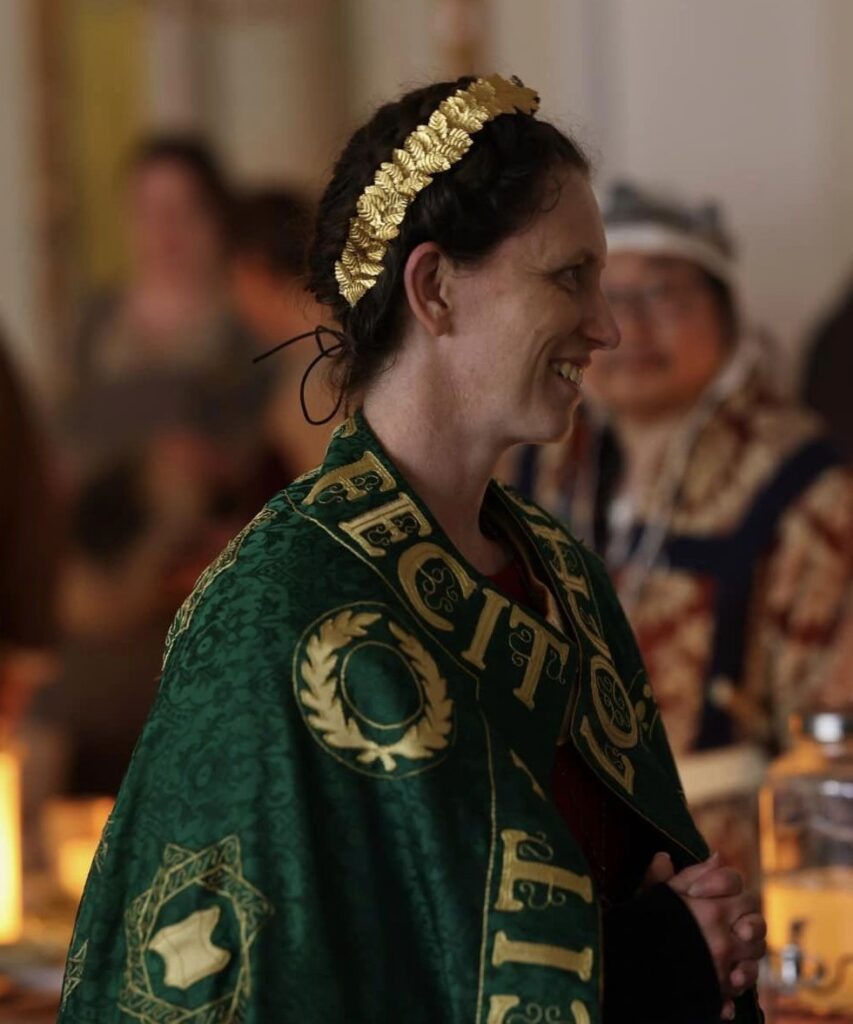
Photo: Nathan Blacktower
Afterthoughts
The cloak is still not quite finished – it needs a proper clasp. I have designed the clasp, and work is underway by Mistress Tigre to make this in enamelled silver-gilt.

